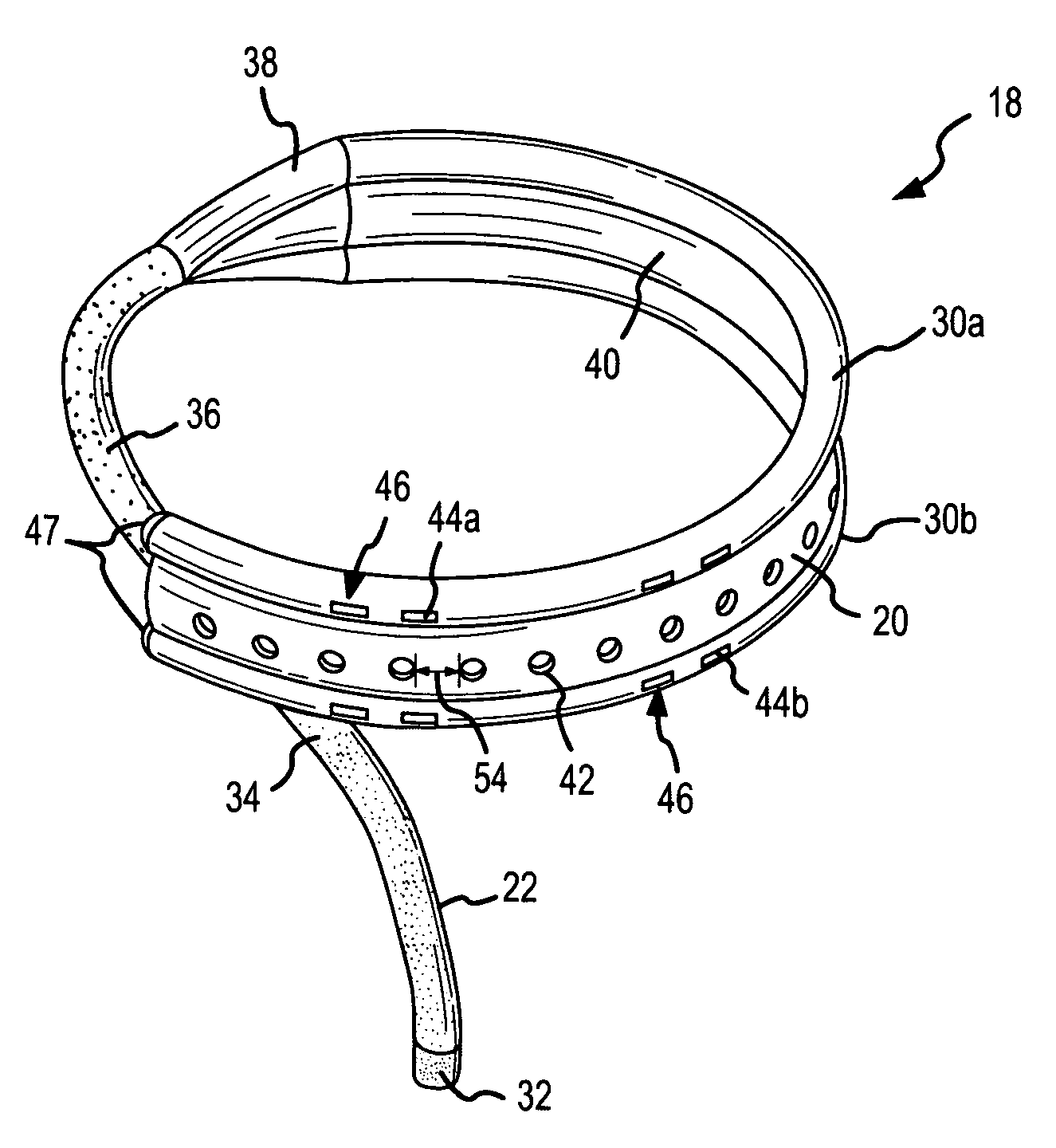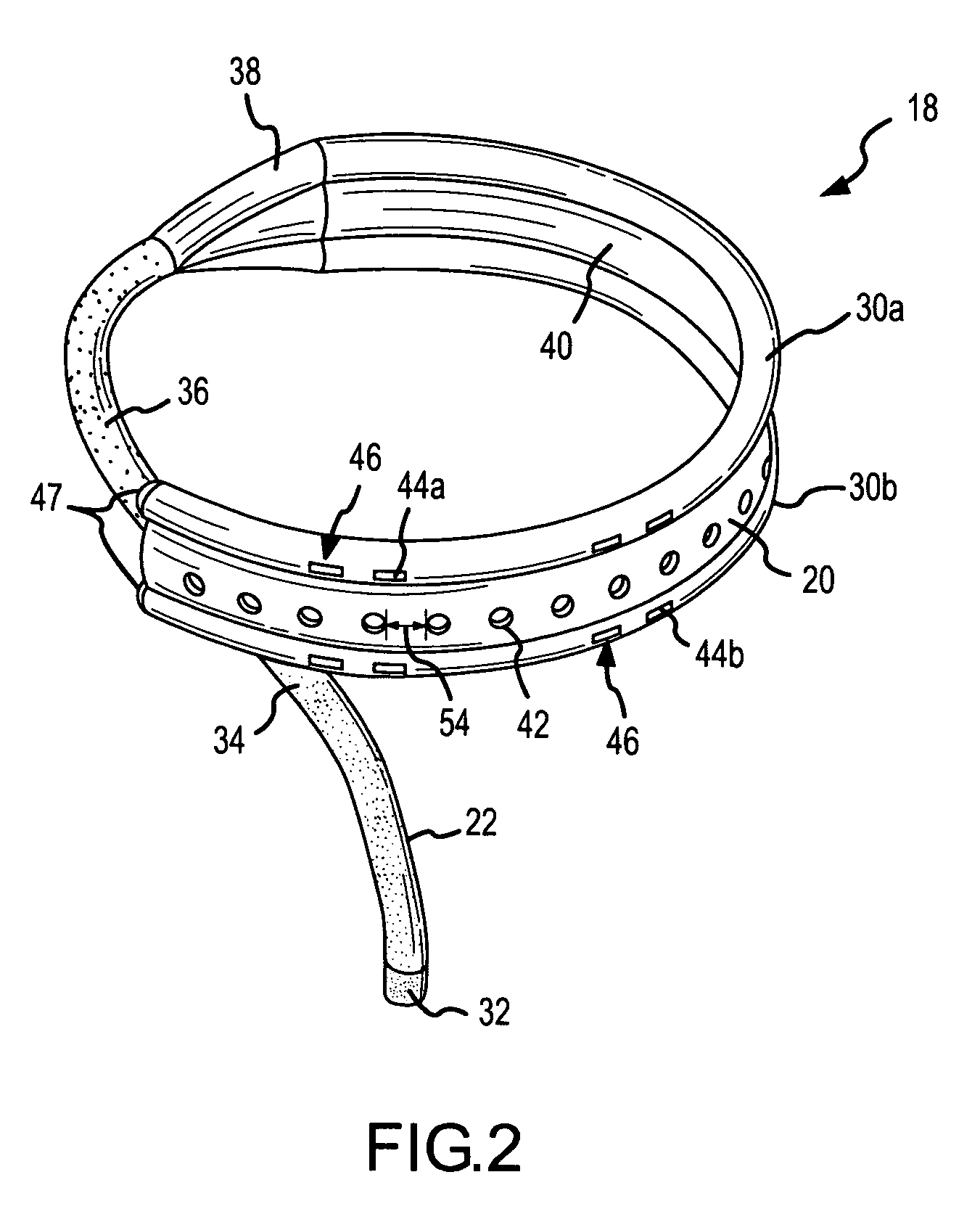Catheter with bifurcated, collapsible tip for sensing and ablating
a catheter and collapsible technology, applied in the field of catheters for diagnosing and treating tissue, can solve the problems of increasing the likelihood of thromboembolism, increasing the risk of thromboembolism, and significant patient discomfor
- Summary
- Abstract
- Description
- Claims
- Application Information
AI Technical Summary
Benefits of technology
Problems solved by technology
Method used
Image
Examples
Embodiment Construction
[0046]The instant invention is directed to a unique sensing / ablation electrode provided on a distal portion of a catheter / introducer assembly. The sensing / ablation electrode is bifurcated providing two sets of sensor arrays separated by a virtual electrode for tissue ablation. The sensing / ablation electrode can be used for pre-treatment diagnostic sensing and for post ablation efficacy testing of a lesion formed by the ablation component without having to move the electrode or introduce additional catheters with sensor arrays into the patient.
[0047]FIG. 1 is an isometric view of a catheter / introducer assembly 2 according a first embodiment of the present invention. In this embodiment of the invention, a catheter 22 having a sensing / ablation electrode 18 at a distal end 12 and a handle interface 4 at a proximal end 14 is used in combination with an inner guiding introducer 28 and an outer guiding introducer 26 to facilitate formation of lesions on tissue, for example, cardiovascular ...
PUM
 Login to View More
Login to View More Abstract
Description
Claims
Application Information
 Login to View More
Login to View More - R&D
- Intellectual Property
- Life Sciences
- Materials
- Tech Scout
- Unparalleled Data Quality
- Higher Quality Content
- 60% Fewer Hallucinations
Browse by: Latest US Patents, China's latest patents, Technical Efficacy Thesaurus, Application Domain, Technology Topic, Popular Technical Reports.
© 2025 PatSnap. All rights reserved.Legal|Privacy policy|Modern Slavery Act Transparency Statement|Sitemap|About US| Contact US: help@patsnap.com



